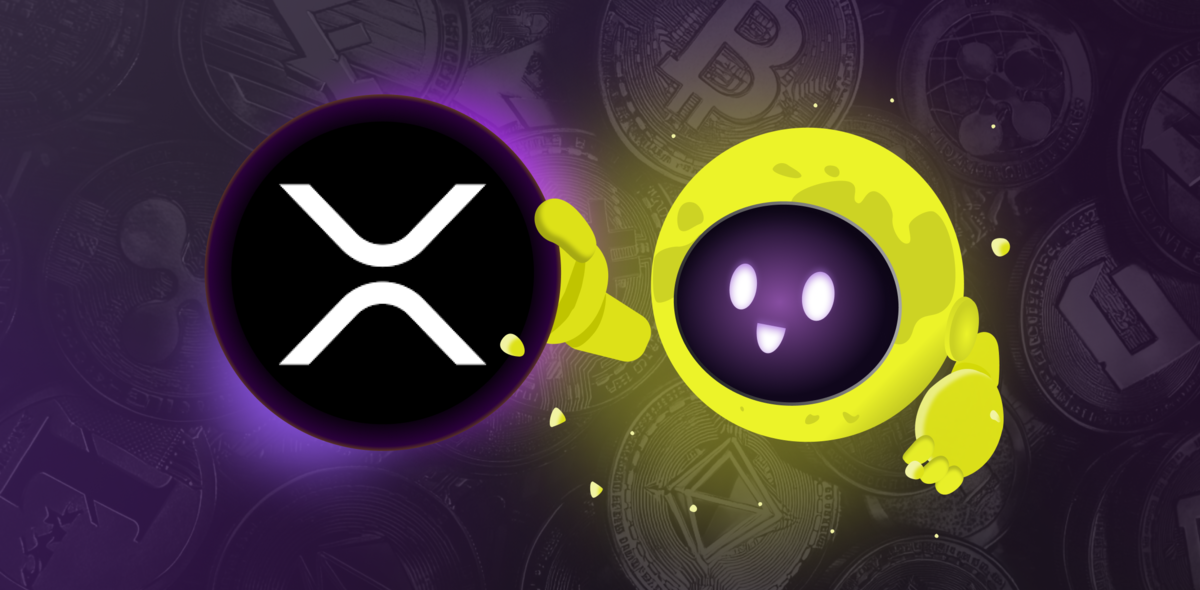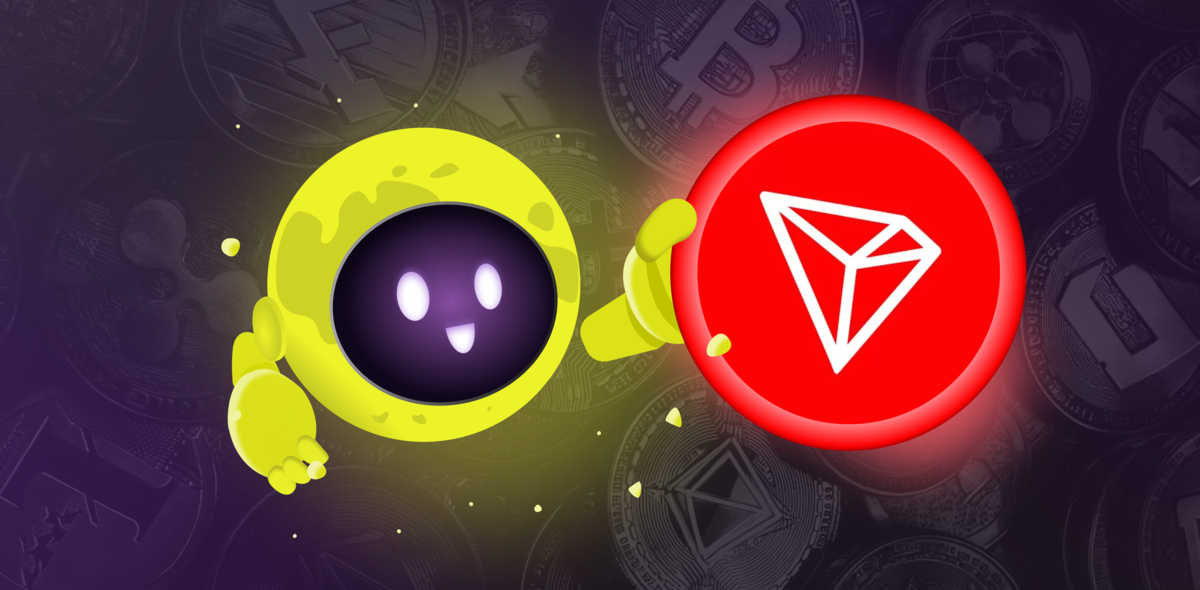
Ripple (XRP) is one of the oldest crypto projects. Despite the pressure from regulators, it continues to live and surprise investors. In this article, we’ll discover what Ripple is, XRP meaning and usage, how the project works, and what claims the regulatory authorities make against it.
What is Ripple?
In 2012, the company Ripple Labs (Ripple) and the RippleNet platform were launched.
The idea was to upstage the SWIFT banking system and make transfers faster and cheaper. Sooner, it became clear that working with banks would be even better. Now Ripple is a whole ecosystem with its solutions and tools for sending and receiving money around the world, be it cryptocurrency, fiat, or gold. Many financial institutions already use Ripple’s products to optimize their processes.
The company has received funding from several popular investors and venture capital funds. Developers also managed to launch three main financial products— xCurrent, xRapid, and xVia.
What is XRP?
In the same year of Ripple’s launch, an early version of XRP, the platform's native token, was developed. Now it is a token of RippleNet. XRP is used for making payments and providing liquidity on the platform. The coin acts as an exchange mechanism between two currencies or networks and can be sent directly without an intermediary. It powers a basic blockchain known as the XRP Ledger.
XRP emission is limited. A total of 100 billion coins were issued. Around half of them are on the market. Part of the funds is in the company's escrow account. In May 2017, the team decided to deposit 55 billion XRP tokens. The move allowed Ripple to limit the amount in the market. Due to this, XRP began to grow.
XRP has been in the top 10 most capitalized cryptocurrencies for a long period. At the same time, the coin is one of the few capitalization leaders who failed to update the absolute maximum amid the crypto market bull run in 2021. One of the reasons for XRP's weakness was Ripple's conflict with the US Securities and Exchange Commission (SEC).
Who created XRP?
The author of the project concept is the programmer Ryan Fugger. It was he who, in 2005, launched the decentralized payment system RipplePay.com, the ideas of which, in the future, formed the basis of Ripple.
In 2012, the Ripple project was launched by developers David Schwartz, Jed McCaleb, and Arthur Britto. They bought RipplePay from Fugger and used the source code to create the XRP Ledger and, subsequently, XRP.
In 2012, businessman Chris Larsen also joined the project and took over as CEO.
CEO Brad Garlinghouse has managed Ripple since 2016.
How has XRP performed in recent years?
- In the 2017 bull market, the XRP hit an all-time high of $3.4.
- In mid-2020, a broader market correction and a conflict with the SEC have pushed its price to lows near $0.15.
- In July 2024 - $0.38.
- In December, it grew to $2.7.
Such a takeoff was driven by a few positive factors:
- Sentiment after President Donald Trump’s re-election in November,
- Growing usage of the network,
- Potential approval of the XRP exchange-traded funds (ETFs) in 2025.
Recent developments signal that XRP may be entering an exciting new stage of growth as the use and promise of regulatory certainty combine to drive growth.
- On January 15, 2025, the XRP reached a seven-year high of $3.40.
The last boost happened due to the growth in online meme coin trading, anticipation over the crypto-friendly administration of President Trump, and due to the change of the SEC’s management and the potential for clarity in the SEC vs Ripple case.
How do XRP and the XRP Ledger work?
The peer-to-peer network XRP Ledger (XRPL) is a decentralized public blockchain. It records information about network transactions. XRP is its cryptocurrency. The XRPL Foundation is responsible for developing the XRP Ledger.
Unlike Bitcoin's Proof of Work (PoW) or Ethereum's Proof of Stake (PoS) protocols, XRP Ledger does not use mining or stacking to validate transactions. Blockchain works on the basis of nodes: unique network nodes managed by validators. Some of them are on the Unique Nodes List (UNL), a specific set of validator nodes or trusted participants in a blockchain network. The group is responsible for protocol changes. If 80% of nodes consider a transaction valid, the unique node can continue to validate the transaction.
Thus, the Ripple team offered the market an analogue of SWIFT, the international interbank system. Thus, the Ripple team offered the market an analogue of the international interbank system for transferring information and making payments — SWIFT. Here is the scheme developed by the project team:
- Ripple’s tokenized scheme replaced most common cross-border SWIFT transfers. Ordinary cross-border SWIFT transfers to Ripple have been replaced by a tokenized scheme. The work involves converting any currency in the world into native project tokens XRP, with their subsequent transfer to the addressee via XRPL.
- Tokenized transfers are faster and cheaper than regular ones. In addition, the On-Demand Liquidity (ODL) system allows financial institutions to refuse to pre-purchase currency for its issuance in branches. The recipient can refuse to cash out tokens or, if necessary, exchange them for another cryptocurrency.
How is XRP different from Bitcoin?
XRP is very different from Bitcoin. What's the difference? First of all, in speed and commissions:
- Transaction speed: XRP is much faster than Bitcoin.
- Fees: RippleNet transfers cost almost nothing.
- Mining: Ripple doesn’t use mining, unlike Bitcoin.
- Primary use case: Bitcoin is a store of value, and Ripple is for fast payments.
Are Ripple and XRP the same?
You can notice that “XRP” and “Ripple” are commonly used interchangeably. You can notice that when speaking about Ripple and XRP, they are often used interchangeably. However, these two are different concepts.
Ripple is a company that provides its users with a blockchain-based digital payment network.
XRP is a crypto asset that facilitates payments on this network.
Advantages and disadvantages of XRP
Among the advantages are:
- Transaction speed: XRP transfers take only 3-5 seconds.
- Scalability: Ripple can handle up to 1,500 transactions per second.
- Low fees: RippleNet transfers cost only $0.0002.
- Liquidity: XRP is easy to buy and sell on crypto exchanges.
- Cooperation with many large corporations (National Bank of Egypt, Banco Santander, MoneyGram, AMEX, Mitsubishi UFJ, and more).
- Eco-friendly: According to the developers, the XRP Ledger Consensus Protocol is one of the first environmentally friendly blockchains.
It is worth noting the disadvantages of the project:
- Technically centralized: The network is controlled by validators. Validators make it more centralized than Bitcoin or Ethereum.
- The project is developed by one company. If it faces issues, the situation will affect XRP. The critics' prediction was partly reflected in the weakness of the cryptocurrency amid SEC pressure.
- The company fully controls the issue of tokens, which means it can manipulate the cryptocurrency exchange rate.
- Litigation. Issues with the SEC and other regulators may continue.
SEC vs Ripple
At the end of December 2020, the SEC accused the California startup of illegally selling securities in the form of XRP tokens. The Ripple representatives did not agree with the regulator and objected to the characterization of the asset. As a result, the confrontation between the parties began.
On July 13, 2023, the SEC lost the Ripple case. The court did not recognize XRP as a security in the case of private sales of cryptocurrency. At the same time, the judge saw violations in the institutional sales of XRP.
On August 7, 2024, the court ruled that the Ripple team should pay a fine of $125 million to the SEC as part of the settlement of the conflict. It is noteworthy that the Commission claimed $2 billion.
Technically, at this stage, the parties can put an end to their confrontation, since the regulator will no longer be able to accuse the project of violating the securities law. At the same time, it is possible that the SEC will want to appeal the court decision on the amount of the fine.
Conclusion
Enduring the turbulence of the crypto market and attacks from regulators, Ripple remains a competitive project that has held a special place in the market through its innovative products for a long time. Ripple (XRP) is a popular, valuable tool for large financial institutions: different banks willingly use the company's products to speed up and simplify transfers.
Ripple has its advantages, such as high speed, low fees, and reliability, and we see how the current political environment in the United States favorably affects the popularity of the project. If you're thinking about investing in cryptocurrencies, XRP could be an interesting option. But it's always important to weigh the pros and cons.
FAQ
What is Ripple?
Ripple is a company that provides a blockchain-based digital payment network for its users.
XRPL vs XRP
XRP is a crypto asset that facilitates payments on RippleNet. XRPL is the software ledger where transactions with XRP are recorded.
Is XRP a good investment?
Investing in XRP has its pros and cons. The advantages are high transaction speed, low fees, and widespread use. However, there are also disadvantages: volatility, regulatory risks, and litigation. Your decision about investing in XRP must depend on your goals. XRP has great potential and can be a worthwhile investment.
Does XRP have value?
The main factor of XRP’s value is the ability of Ripple to work with financial institutions worldwide. And the ability to be used in quick and cost-effective currency exchange.
How to buy XRP (XRP) in 2025?
You can buy XRP on many popular crypto exchanges and store it in most crypto wallets.




